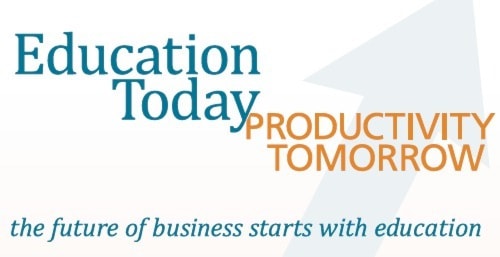The number of college and university student spaces in the South Fraser region needs to triple by 2025, says the Surrey Board of Trade (SBOT), or Surrey will suffer both socially and economically.
The board, which represents about 1,900 businesses, presented a paper called Can the Future Learn in Surrey and the South Fraser? on Thursday, stating investment in post-secondary education is "urgently needed."
The document says that with 940,000 people, Surrey and the South Fraser region are the fastest-growing areas of B.C. and yet there is relatively little local access for those wanting to attend college or university.
While the area produces 22 per cent of B.C.'s high school graduates, Kwantlen Polytechnic University and SFU Surrey together provide less than 13 spaces per 100 residents aged 18 to 25. The rest of the province gets four times the number of seats, according to the SBOT.
 Anita Patil Huberman, the board's CEO, says there needs to be a firm commitment from the province to invest in a phased-in approach that will triple the current number of university spots in the next 12 years.
Anita Patil Huberman, the board's CEO, says there needs to be a firm commitment from the province to invest in a phased-in approach that will triple the current number of university spots in the next 12 years.
"This is going to be a key provincial election issue for us this year," she said. "We'll be asking all of the candidates, including the leaders of both parties, where they stand. We don't want to hear 'fiscal restraints', 'challenging for the economy'. There has to be a mindset that education is a fundamental foundation for driving our economy now and also in the future.
"I want it to be a campaign promise."
The post-secondary push is part of the SBOT's Education Today, Productivity Tomorrow paper, which was launched with a focus on kindergarten to Grade 12 in 2009.
"We're finding that businesses … are finding it really challenging to find skilled workers, the types of workers they need to build their products or sell their services," said Huberman. "There has to be access. A third of our population in Surrey is under the age of 20, and when they can't access SFU or Kwantlen university, it compromises the workers within our workplaces."
SFU tur ned away about three-quarters of applicants this year due to high demand and raised admissions criteria so that only those with a high school average of 80 per cent or higher were admitted, closing the door on thousands of potential students.
ned away about three-quarters of applicants this year due to high demand and raised admissions criteria so that only those with a high school average of 80 per cent or higher were admitted, closing the door on thousands of potential students.
SFU president Andrew Petter says the board of trade's advocacy has helped shine a light on a problem of growing concern.
He said the government, through a single strategy, could address two major issues: lack of student access to university and the looming skills shortage in B.C.
"The skills that are needed include university education … people who are going to be innovators. The people who are going to create the jobs are going to be people who have a range of different capabilities, many of which are going to come through university education," said Petter.
Gord Sc hoberg, chair of Kwantlen's board of governors, says Kwantlen has been underfunded for some time, but said new president Alan Davis has helped provide "fresh inspiration" around how the school collaborates with SFU and other universities in terms of program delivery and other potential efficiencies.
hoberg, chair of Kwantlen's board of governors, says Kwantlen has been underfunded for some time, but said new president Alan Davis has helped provide "fresh inspiration" around how the school collaborates with SFU and other universities in terms of program delivery and other potential efficiencies.
"I think that's part of the story when we go to the government, is not just ask for more money, but do our part, too," Schoberg said.
Still, he added, having the SBOT recognize the value of higher education is invaluable.
"The folks that the board represents are our customers. These are the folks that hire our grads, so it's very important that we align with them."
Huberman also noted that if students are traveling farther to schools such as UBC, they leave the South of Fraser, taking their talents with them. Research has shown that if those who go elsewhere for education, tend to stay there.
About 62 per cent of Surrey's workforce has post-secondary education versus 71 per cent in the rest of Metro Vancouver.
For every 1,000 people in the region, there are currently 12.6 full-time post-education spaces – a number the board of trade wants bumped up to 37.8 by 2025. With the population also growing over the 12-year time frame, that means an expansion from the current 12,210 spaces to 46,060.
"Because we're so far behind, I think anything at this stage to get us going would be welcome," said Petter. "The point is right now we've gone for the last three or four years with no growth in the post-secondary system to speak of."
Last October, SFU reiterated a request made in 2006 that SFU Surrey's physical space needed to double by 2015 to meet demand. There has been no financial commitment from the province to date.
Without the investment in post-secondary education in the region, the SBOT says the lack of skilled labour and research facilities "will continue to significantly hinder the growth of Surrey's core business community." As well, socio-economic problems will increase, says the board, and it will become increasingly difficult for local business to attract and retain skilled workers.
SBOT will now forward its advocacy paper to Minister of Advanced education John Yap and request a meeting.
